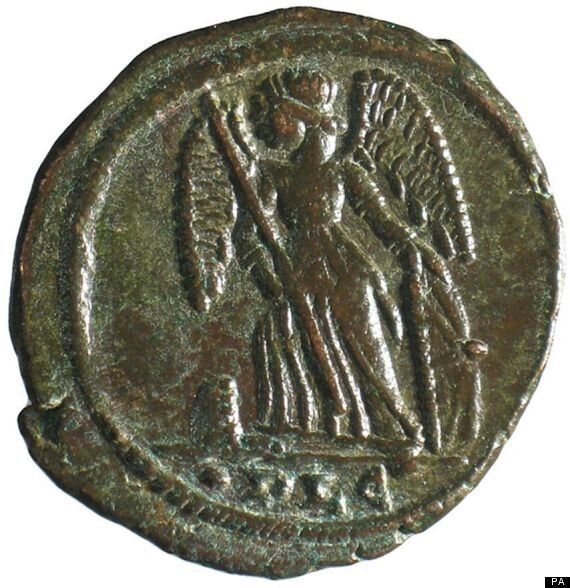One of the largest hoards of Roman coins ever discovered in the UK has been unearthed by a builder. Metal detector enthusiast Laurence Egerton discovered the haul of 22,000 fourth century copper-alloy coins in Devon in November last year. After uncovering the coins on the Clinton Devon Estate, near Seaton Down, Mr Egerton reported the find to the landowner and the local authority - and slept in his car for three nights to guard it.
The hoard was then carefully removed in its entirety by a team of archaeologists and over the past 10 months the coins have been lightly cleaned, identified and catalogued by experts from the British Museum. The Seaton Down Hoard, which includes coins that are very well preserved, has been declared treasure by a coroner.
And the Royal Albert Memorial Museum in Exeter is now launching a bid to purchase the coins for public display in the city. Mr Egerton spoke of his shock at finding the haul, which was located near to a Roman villa and possible fort at the Honeyditches site.
"Initially I found two small coins the size of a thumbnail sitting on top of the ground and then, as I began working in a grid formation in the surrounding area I had a 50 50 signal on the metal detector which means that there is probably iron involved," he said.

A Roman coin which forms part of the Seaton Down Hoard
"Most detectors are set up to ignore iron but I decided to dig the earth at that spot and immediately reached some iron ingots which were laid directly on top of the coins. The next shovel was full of coins - they just spilled out over the field. I had no idea how far down the coins went so I stopped immediately and phoned my wife to come to the site with a camera.
"Under the terms of my licence, I contacted Clinton Devon Estates and Devon County Council and was instructed to take away what was loose and then fill in the hole. Between finding the hoard and the archaeologists excavating the site I slept alongside it in my car for three nights to guard it. It's by far the biggest find I've ever had. It really doesn't get any better than this."
Most of the coins are associated with Emperor Constantine I and his family, who became Emperor while in Britain in AD 306. Other coins date from the joint reign of Constantius II and his younger brother Constans, from AD 337 to 40.
Dr Roger Bland, from the British Museum, said: "It is one of the largest coin hoards of the fourth century ever found within the Roman Empire but, despite the number of coins found, the financial value would not have been great, amounting to approximately four gold coins. This sum of money would possibly have provided the ration of four soldiers for one year or a worker's pay for two years."